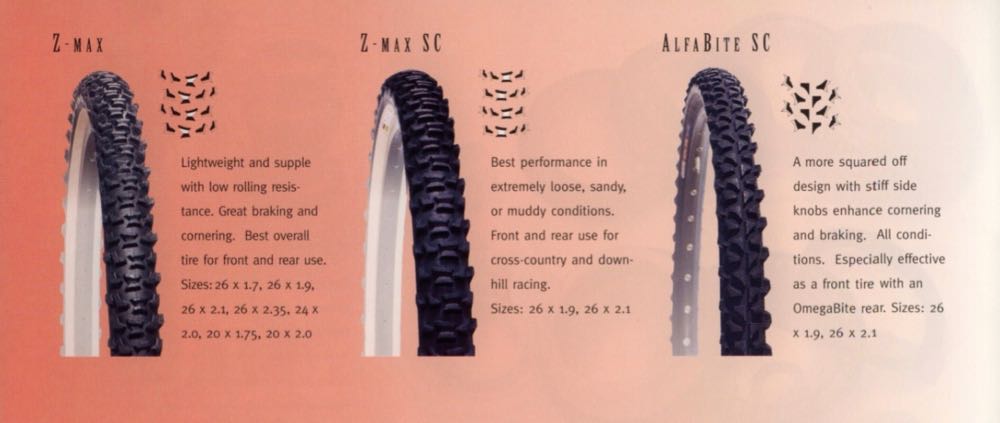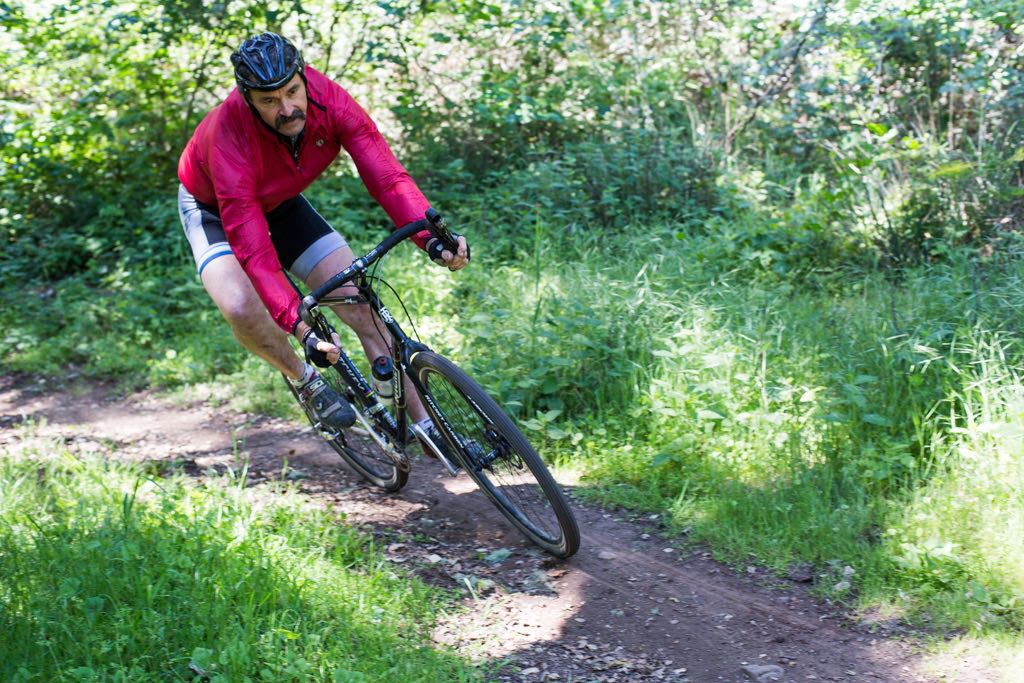Welcome to Tire Tech, Bikerumor’s mostly-weekly series on bicycle tires. Like our Suspension Tech and AASQ series, we take your questions about tires, whether it’s road, cyclocross, fat, plus, gravel, or mountain bike, and get answers from the brands and people behind them.
If you have been following our Tire Tech series, you know creating a good tire is highly nuanced. And as bike technology advances it gets increasingly more complicated. This week we turn the clock back to see where mountain bike tires began. We’re extremely fortunate to be guided down memory lane by one of the legends of the sport—Mountain Bike Hall of Fame inductee, Tom Ritchey.
Few people can offer as much perspective on this subject as Tom. For more than four decades he has designed some of the most successful bike products in the industry, including tires.

When asked about his journey with tire development, Ritchey took me back in time. Way back. As a kid growing up in a cycling household, he worked with a local bike shop repairing tubular tires. Those of us who remember those years of cycling know that was no easy task, especially for a 12-year-old kid. But it imparted an appreciation for tires and equipment on the young Ritchey. It wasn’t long after when he started building bike frames.
The son of an engineer, mechanical theory was always instilled in Ritchey. He understood then, as he does today, the science of cycling can lend riders a significant performance advantage. He also learned early on that a bicycle’s performance is determined by the sum of its parts. As critical as a frame is to speed and control, so too is something as small as a tire knob. Ritchey has always designed to the complete system, not just to a bicycle’s individual parts.

When the sport of mountain biking emerged from the hills of Northern California, it provided a clean slate of opportunity for forward-thinkers like Ritchey. But it was a competitive scene right out of the gate. The big names in the market like Nishiki, Ross, and even Specialized were already creating entire catalogs of products for the nascent sport. It was the shot in the arm the cycling industry and lagging economy needed.
As a lifelong cyclist and a protagonist on the racing scene, Ritchey knew he had to design his way to the front of the pack, on and off the race course. With regard to tires and wheels, early offerings were usually oversized iterations of existing BMX products. The specificity in mountain bike equipment had not evolved as rapidly as Ritchey thought possible. According to Ritchey, “Many early products sold to mountain bike riders just didn’t perform well, or even hold up to normal use.”

By 1983, mountain bike racing had come into its own. The first NORBA National Championship race was held that year with a young Steve Tilford taking the win in his first-ever mountain bike race. The Ritchey team that day was a formidable crew with riders like Eric Heiden, Joe Murray, Dave McLaughlin, Dale Stetina, Sterling McBride, and David Zanotti joining Tom on the start line. The competition got increasingly intense over the next years and Ritchey was in the thick of it as a racer, team manager, and product developer.
With regard to tires, Ritchey put his engineering mind to work to analyze how he could make them better. It was all about seeking that extra advantage to snag the win. His first step was evaluating a tire’s limitations and assessing what needed improvement. He began to scrutinize wear patterns and the weaknesses all tires eventually displayed with use. The first Ritchey tire designs were guided by those observations. He used them to determine where tires required reinforcements and where material could be trimmed or altered. The Ritchey Quad released in the early 1980s demonstrated his increasing understanding of lug efficiency with a centerline of joined knobs called the GripStrip.
As a road racer, Ritchey also understood the importance of weight. During our interview, he reminded me how light early wheels were, “People don’t realize, the first mountain bike race wheels were lighter than the carbon fiber wheels we use today.” When the folding Ritchey Force Racing K tire hit the scene, it was a monumental leap forward in mountain bike tire tech. It effectively put road tire casings on the dirt.
Innovative as he was, Ritchey was still a small player in the bike industry. Whereas the bigger brands were pumping money into their marketing machines, Ritchey used the racing circuit to develop his products and drum up exposure.
“We were the smallest company on the race circuit, but we had the biggest presence.”
Partnering with some of the fastest riders on the circuit like Don Myrah and Thomas Frischknect help push Ritchey into the spotlight. And it provided him with a built-in R&D team. in 1989 Myrah won the inaugural MTB XC World Championships for the Ritchey team.
By the early 1990s, the Ritchey name was synonymous with top-level racing. His collaborations with the sport’s elite continued with Nino Schurter. The World Championship colors have always been a part of the Ritchey brand identity and for good reason.
When Ritchey first started designing tires, he looked to car and motorcycles for reference. He noticed an unsophistication he felt carried over to bicycles. Even car tires of the time were not directional. After evaluating the forces applied to mountain bike wheels, he realized tires should be designed for rotational direction, and for front and rear wheel specificity. He believed knob placement and shape had to be influenced by lean angle. The dynamic design process used by Ritchey was revolutionary. Called Vector Force Analysis (VFA), it’s still the fundamental design ethos behind all Ritchey tires. It’s also been widely adopted across the industry.

Guided by his newfound understanding of the forces imposed on mountain bike tires, Ritchey set out to redefine how tires were made. His lug shapes took on a more angular and chiseled appearance over time. They got lighter and more purpose-built for a widening range of conditions. Tires like the Megabite Overdrive began to take on the characteristics Ritchey tires would carry forward through to today.
When asked about the Overdrive he said, “It took a long time to design the Overdrive. It has changed only slightly over the years. The blocks have been made bigger and smaller, but it is relatively unchanged. We will never retire that tire.”

If you were lucky enough to catch those early years of mountain biking, chances are you rolled on Ritchey tires at some point. I certainly did. It’s refreshing to know the man behind those pioneering treads is still at the design desk. Every tire to wear his name, even today, is the end result of his 40 years in the industry and his time on the bike.
Next week I recap my talk with Ritchey about his current tires, how the VFA principles are applied to tread designs, and what goes into the process of bringing a new tire to life.
Note from the author: I would like to extend my sincere gratitude to Tom Ritchey for taking the time to share his personal story with our readers.
Pumped on this? Got a tire-related question you want answered? Email us. Want your brand or product featured? We can do that, too.
